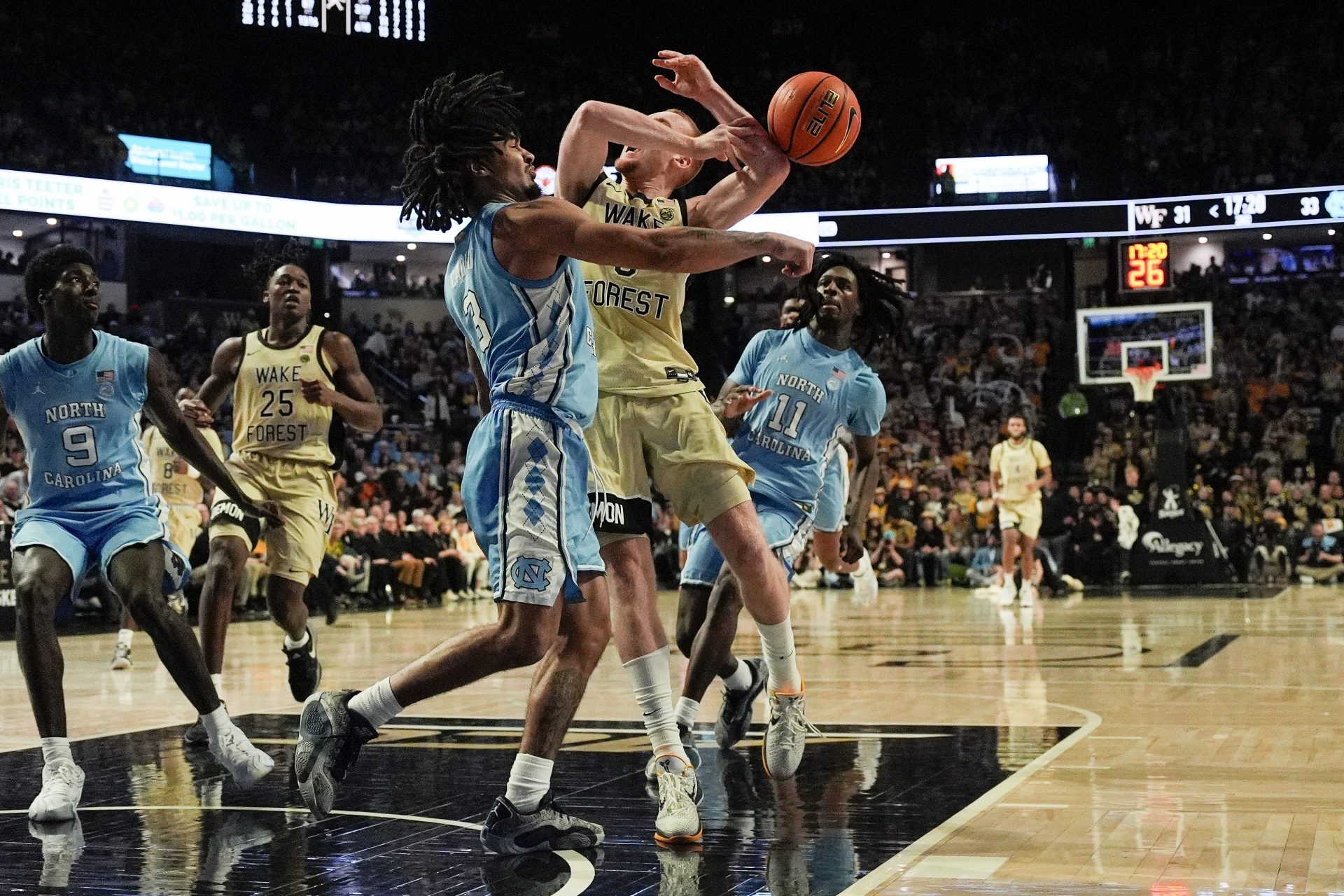Whether you like it or not, fouls can make or break a game, so it’s crucial to understand the details—how many fouls are allowed in a college basketball game for both players and teams.
Let’s break it down and help you become a more knowledgeable fan this basketball season.

How Many Fouls Can a Player Have in College Basketball?
In the pros, players are out after their sixth foul in a 48-minute game. In college basketball, which features a 40-minute game, each player is allowed five fouls. Coaches often manage their star players’ foul trouble early in the first half, sitting them out when they accumulate early fouls to ensure they stay on the court as the game heats up.
What Is a Technical Foul?
Technical fouls are called for infractions that fall outside the regular flow of the game. While the definition is broad, various actions can earn a technical penalty.
- Technical Penalty: One free throw chosen by the team, plus possession of the ball.
Technical fouls can range from serious offenses like violent plays to seemingly minor ones like hanging on the rim too long or multiple delays of game. There’s even a rarely enforced “flopping” rule to prevent players from trying to deceive officials.
These fouls are subjective, relying on the judgment of top referees who oversee March Madness. Technical fouls can change the course of a game—not only because of the free throws but also because accumulating two technicals leads to ejection from the game.
What Is a Flagrant Foul?
In men’s college basketball, there are two levels of flagrant fouls:
- Flagrant 1: Defined as “excessive or severe contact during a live ball.” This includes what’s known as a “clear path” foul, where a player intentionally fouls an opponent to stop a fast break.
- Flagrant 2: Described as “unsportsmanlike conduct that is extreme in nature.” This carries the same penalties as a Flagrant 1 (two free throws and possession of the ball) but also results in the offending player’s automatic disqualification from the game.
Flagrant 2 fouls are less common because they remove a player from the game, which can be pivotal during the season. However, referees do enforce them when necessary.
How Many Team Fouls Are You Allowed in College Basketball?
Fouls often decide the outcome of games at any level. Free points can be scored through aggressive play and strategic foul-calling, making it essential to understand these rules to fully appreciate the game.
- Bonus: When a team commits their seventh foul of the half, the opposing team is awarded free throws, even if the foul wasn’t on a shot attempt. For fouls 7-9, the opposing team gets a “one-and-one,” meaning they earn a second free throw if they make the first.
- Double Bonus: After the tenth foul of the half, every subsequent foul results in two free throws for the opponent, regardless of the first free throw’s outcome.
It’s not uncommon for both teams to reach the double bonus late in the half, turning a straightforward 20-minute period into a longer, more intense battle.
MORE: Best Rivalries in College Basketball
Now that you have a solid understanding of fouls in college basketball, you’ll be a smarter fan and better equipped to enjoy the thrills of March Madness. Whether you’re cheering from the stands or placing a friendly bet, knowing these rules gives you an edge in appreciating the game’s strategic depth.
College Sports Network has you covered with the latest from the ACC, Big Ten, Big 12, SEC, and every Group of Five conference and FBS Independent program across football, basketball, baseball, gymnastics, and more!


